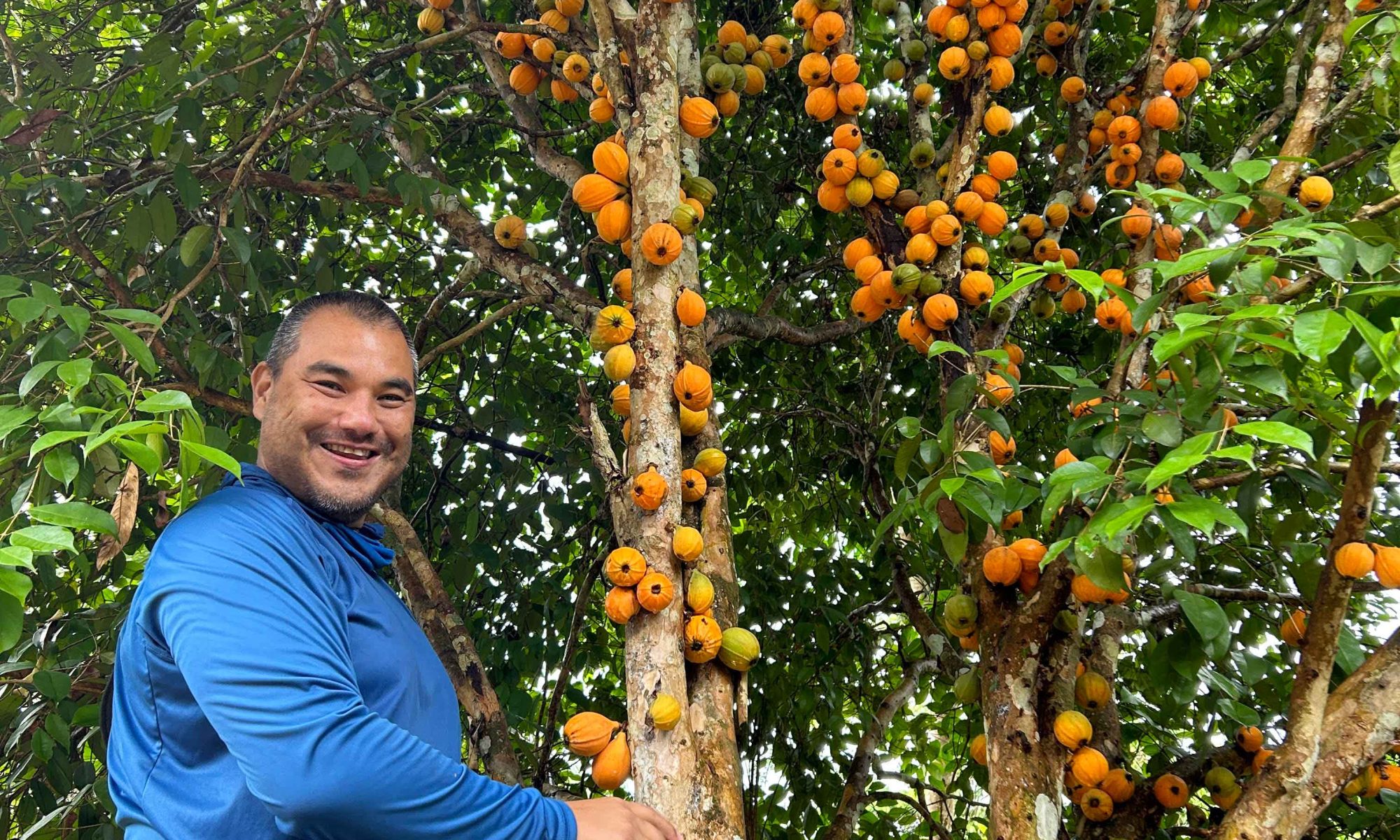We are going back to Long Beach! Yes, it’s not exactly West Los Angeles, but we had such a great time with Jorge Ochoa at Long Beach City College last July, and so many of you seemed willing to make the trek down there, that we decided to explore more of this amazing area.
Our first stop will Rancho Los Cerritos, an incredible hidden gem which I stumbled upon while researching old fruit trees in the Los Angeles area. The Rancho website (check it out!) blew my mind. In 1930, when construction of the tropical and semi-tropical fruit orchard was underway, eleven cogged stones were discovered. Dating to 2-5,000 BC, they represent the earliest presence of Native Americans in the area. Between then and now, the area followed the path of most other vast swathes of land in California: home to the Tongva/Gabrielino people for centuries, land-granted to a Spanish soldier in 1784 before being broken down into tracts for his heirs, sold off for ranching and then farming, falling into disrepair, being restored in 1930 as a summer residence and finally bequeathed to the City of Long Beach which opened it as a rare glimpse into Old California in 1955.
The 1844 adobe which still stands, was the home of the cattle-raising Temple family and then several generations of sheep-raising Bixbys. There have been fruit trees on the site since the building of the adobe, including lemon, orange, and pomegranate. During the 1930s remodel, tropical and subtropical fruit trees were planted along the south side of the historic adobe house for shade. The orchard includes citrus, loquats, sapotes, cherimoyas, macadamias, avocados, and guavas and was able to provide the Bixbys with fruit almost ten months of the year.
I have asked for a tour specifically of the old orchard, but there is also a Backyard Garden with the pomegranates from the 1840s as well as a water tower used long before climate change made this a “modern” idea. To top everything off, there is a mature California Native Garden which should enable us to see many of the plants Antonio spoke about last week.
After our visit to Rancho Los Cerritos, we have been welcomed to Ricardo’s Nursery just 4 miles north. This is a vast wholesale nursery open to the public, with many tropical and semi-tropical fruit trees for sale. Since we will be there the day before Mother’s Day, the nursery will probably be busy, but owner Ricardo Ortiz – originally from Oaxaca and specializing in tropical fruit from that area — has promised to reserve some parking spots for us and will speak to us if he can manage it.
Please note: field trips are for chapter members only. You will receive sign-up instructions with your newsletter.






 We toured the gardens, sampled fruit from some of the plants, and if you wanted a cutting of something, there were two designated scion-takers ready to help. Then we went inside and Jorge provided a presentation of passion fruits he has been impressed with. Then finally, as promised, we went to the propagation greenhouse. For everyone who was willing to get their fingers dirty, we tested our skill at transferring little seedlings in dirt popsicles over to take-home bags. The root systems were still fragile, so this was tricky! There were four varieties: (1) a purple one similar to Frederick but from Australia, (2) Passiflora Ligularis (“Sweet Granadilla” — sometimes found in Hispanic markets), (3) a yellow-gold variety Jorge found in Peru, and (4) a yellow variety Jorge found in Westminster (the location is a trade secret). According to Jorge, all four are very sweet, without any of the bitterness that some passion fruit have. If you got any seedlings from this event, please keep track of what happens with them. We want to give Jorge an update in a couple of years about everyone’s growing experience. How did your plants do? What made them happy? What killed them? By helping him with these details, you’ll be helping other growers in the future. And for those of you who got Ligularis seedlings, remember to keep their roots cool!
We toured the gardens, sampled fruit from some of the plants, and if you wanted a cutting of something, there were two designated scion-takers ready to help. Then we went inside and Jorge provided a presentation of passion fruits he has been impressed with. Then finally, as promised, we went to the propagation greenhouse. For everyone who was willing to get their fingers dirty, we tested our skill at transferring little seedlings in dirt popsicles over to take-home bags. The root systems were still fragile, so this was tricky! There were four varieties: (1) a purple one similar to Frederick but from Australia, (2) Passiflora Ligularis (“Sweet Granadilla” — sometimes found in Hispanic markets), (3) a yellow-gold variety Jorge found in Peru, and (4) a yellow variety Jorge found in Westminster (the location is a trade secret). According to Jorge, all four are very sweet, without any of the bitterness that some passion fruit have. If you got any seedlings from this event, please keep track of what happens with them. We want to give Jorge an update in a couple of years about everyone’s growing experience. How did your plants do? What made them happy? What killed them? By helping him with these details, you’ll be helping other growers in the future. And for those of you who got Ligularis seedlings, remember to keep their roots cool!



